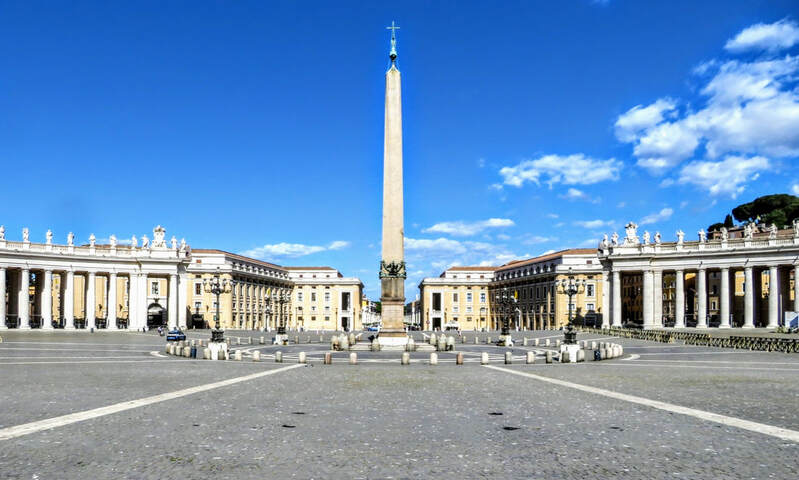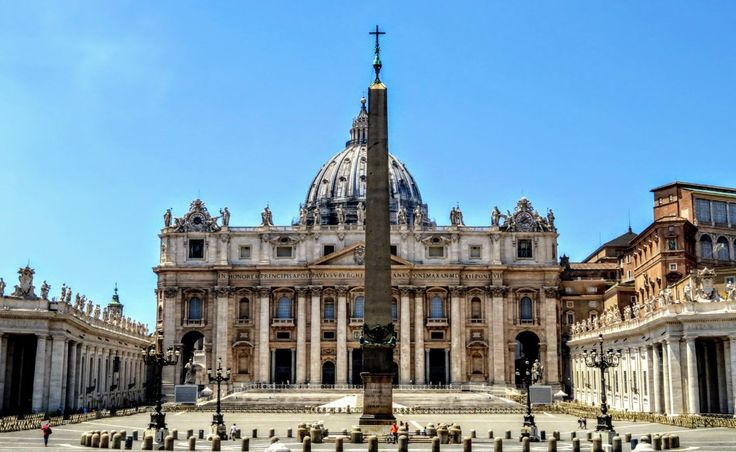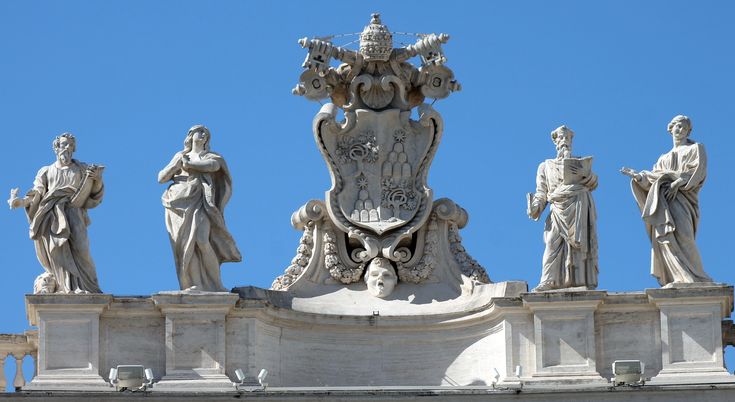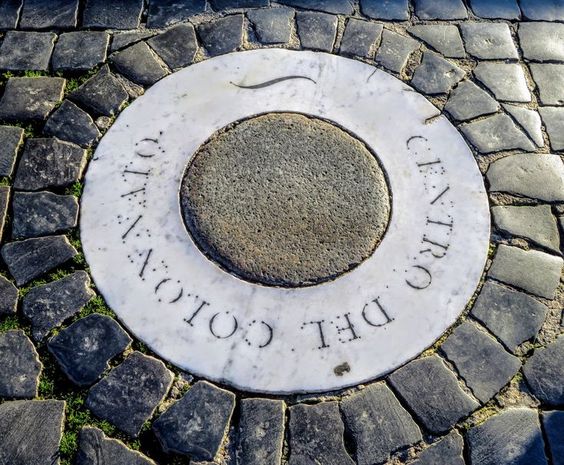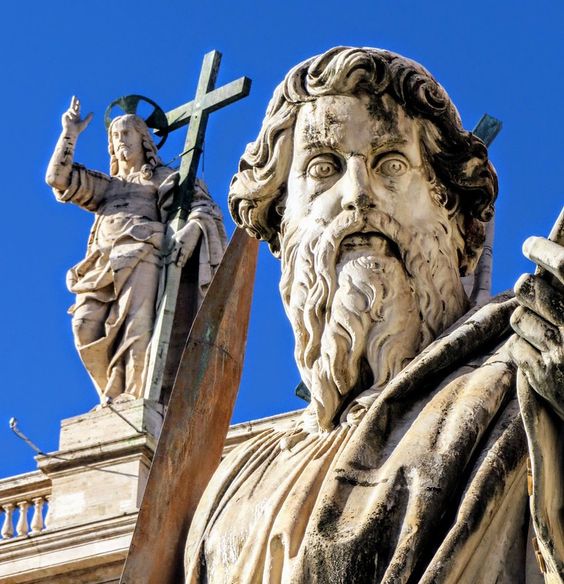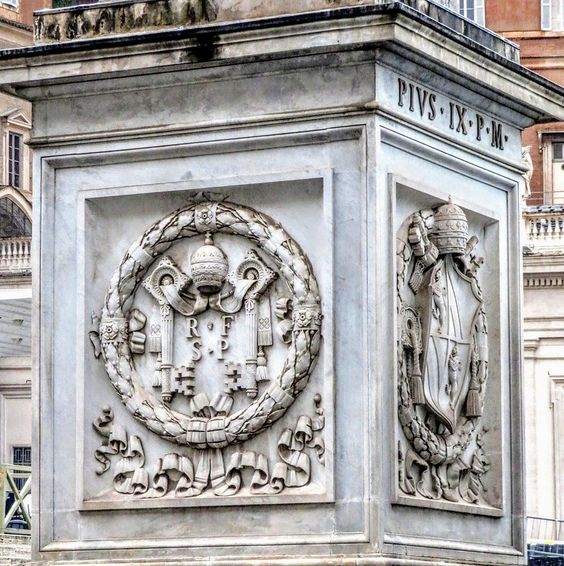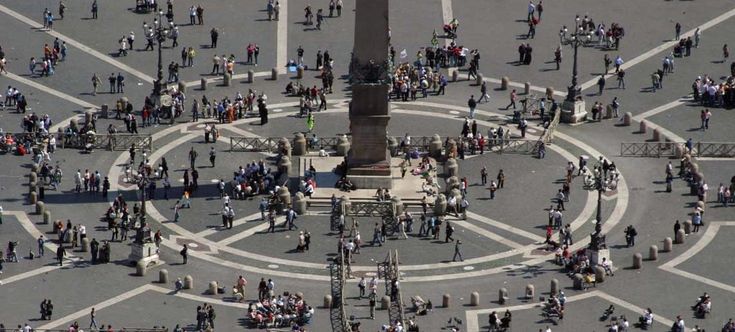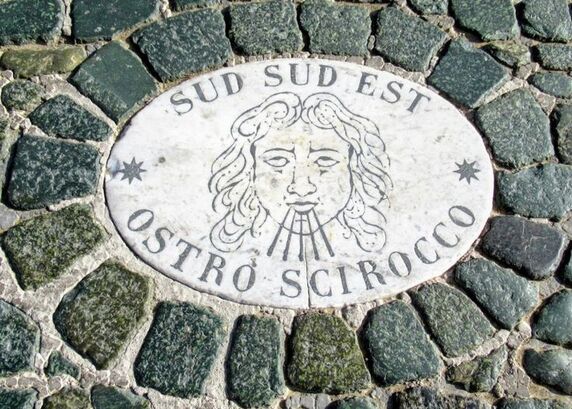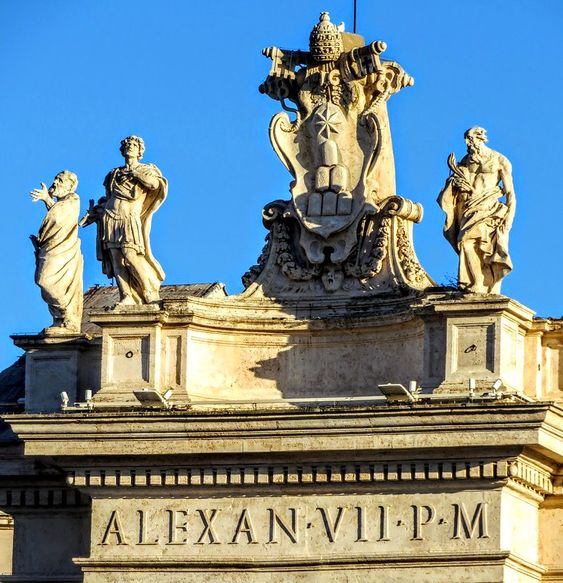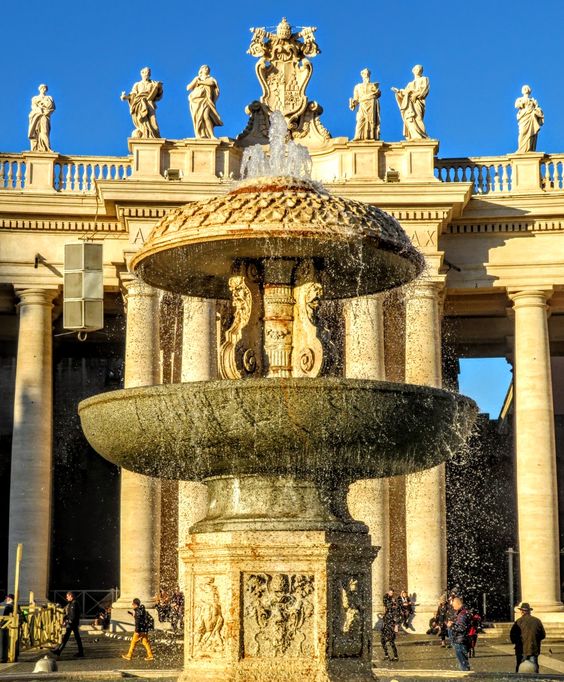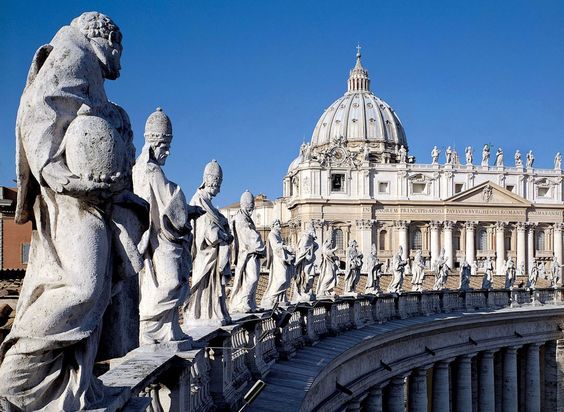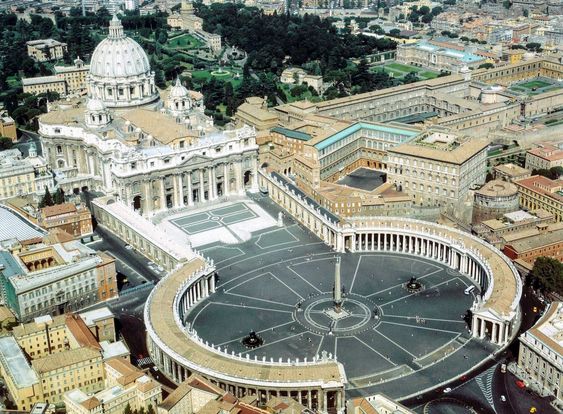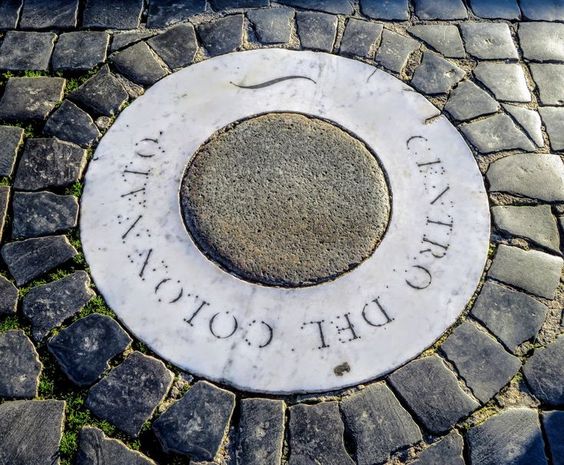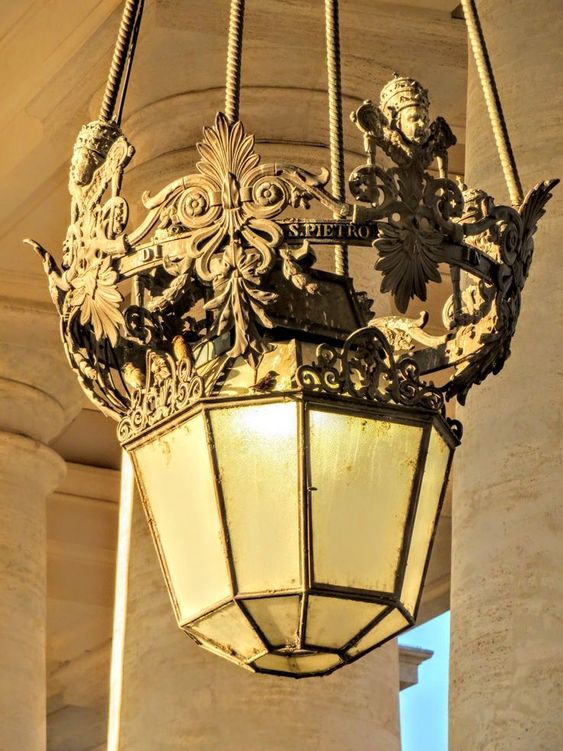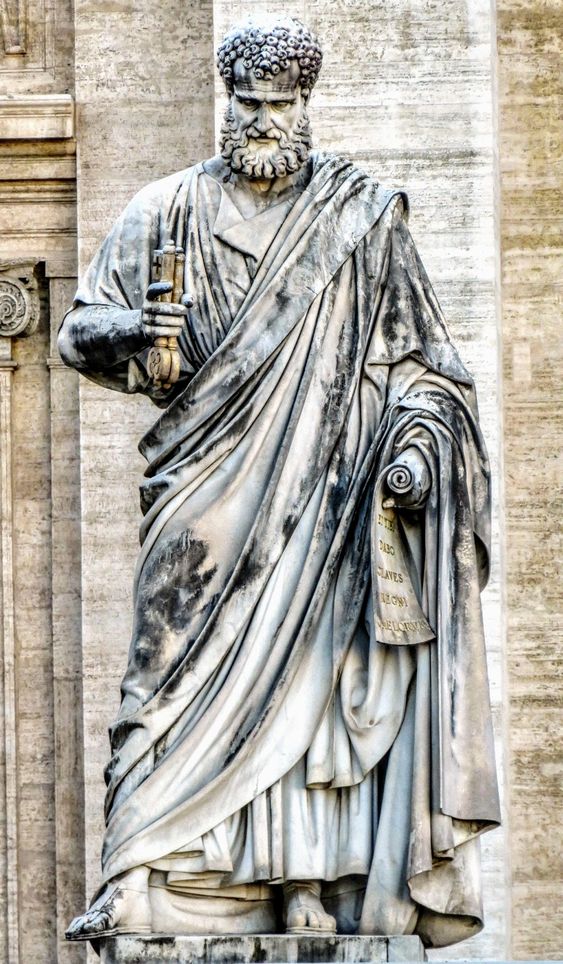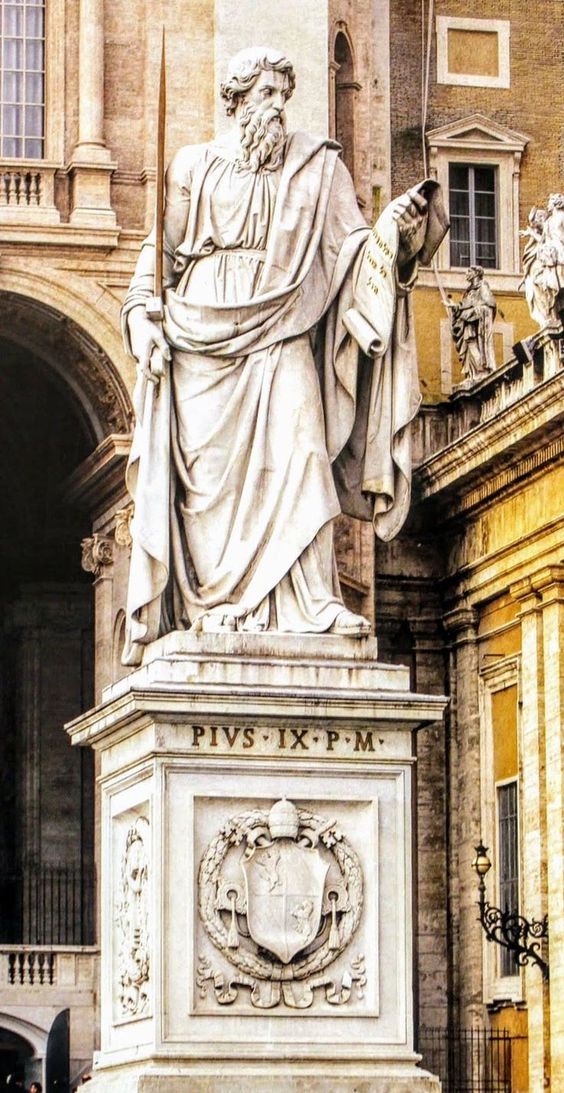- Home
- Walking Tours
- Blog
-
St Peter's Basilica
- Altars
- Baldacchino
- Chair of St Peter
- Chapel of the Baptistery
- Chapel of the Bl. Sacrament
- Chapel of the Choir
- Chapel of the Pieta
- Crossing >
- Dome
-
Monuments
>
- Countess Matilda of Canossa
- Maria Clementina Sobieska
- Queen Christina of Sweden
- Pope Innocent VIII
- Pope Paul III
- Pope Gregory XIII
- Pope Gregory XIV
- Pope Leo XI
- Pope Urban VIII
- Pope Alexander VII
- Pope Clement X
- Pope Innocent XI
- Pope Alexander VIII
- Pope Innocent XII
- Pope Benedict XIV
- Pope Clement XIII
- Pope Pius VII
- Pope Leo XII
- Pope Pius VIII
- Pope Gregory XVI
- Pope Pius X
- Pope Benedict XV
- Pope Pius XI
- Pope Pius XII
- Pope John XXIII
- The Stuarts
- Nave
- Portico >
- Statue of St Peter
- Statues of Founder Saints
- Transept
- Tribune
- St Peter's Square
- Vatican Museums
- Sistine Chapel
-
Fountains
- Trevi Fountain
- Fontana della Barcaccia
- Fontana della Peschiera
- Fountain in Piazza Colonna
- Fountain in Piazza delle Cinque Scole
- Fountain in Piazza dell' Aracoeli
- Fountain in Piazza Nicosia
- Fountain in Piazza di S.M. in Trastevere
- Fountain of Moses
- Fountain of Neptune
- Fountains of Piazza Farnese
- Fountain of Ponte Sisto
- Fountain of the Acqua Paola
- Fountain of the Bees
- Fountain of the Cannonball
- Fountain of the Frogs
- Fountain of the Four Rivers
- Fountain of the Goddess Roma
- Fountain of the Lateran Obelisk
- Fountain of the Mask
- Fountain of the Moor
- Fountain of the Naiads
- Fountain of the Pantheon
- Fountains of Piazza del Popolo
- Fountain of the Porter
- Fountains of St Peter's Square
- Fountain of the Seahorses
- Fountain of the Triton
- Fountain of the Turtles
- Fountains of the Two Seas
- Four Fountains
- Rioni Fountains
- Street Fountains
- Venice Marries the Sea
- On This Day in Rome
-
Churches
- Chiesa del Gesù >
- Chiesa Nuova
- Lateran Baptistery
- San Bartolomeo all' Isola
- San Benedetto in Piscinula
- San Bernardo alle Terme
- San Carlo ai Catinari
- San Carlo al Corso
- San Carlo alle Quattro Fontane
- San Clemente >
- San Crisogono
- San Francesco a Ripa >
- San Giorgio in Velabro
- San Giovanni a Porta Latina
- San Giovanni dei Fiorentini
- San Giovanni in Laterano >
- San Girolamo della Carità >
- San Gregorio Magno
- San Lorenzo fuori le Mura
- San Lorenzo in Damaso
- San Lorenzo in Lucina
- San Luigi dei Francesi >
- San Marcello al Corso
- San Marco
- San Martino ai Monti
- San Nicola in Carcere
- San Pancrazio
- San Paolo fuori le Mura
- San Pietro in Montorio
- San Pietro in Vincoli
- San Saba
- San Salvatore in Lauro
- San Sebastiano fuori le Mura >
- San Silvestro in Capite
- San Vitale
- Sant' Agnese fuori le Mura
- Sant' Agnese in Agone
- Sant' Agostino
- Sant' Alessio
- Sant' Anastasia
- Sant' Andrea al Quirinale
- Sant' Andrea della Valle
- Sant' Andrea delle Fratte
- Sant' Antonio dei Portoghesi
- Sant' Apollinare
- Sant' Eustachio
- Sant' Ignazio di Loyola
- Sant' Ivo alla Sapienza
- Santa Caterina dei Funari
- Santa Cecilia in Trastevere
- Santa Costanza
- Santa Croce in Gerusalemme >
- Santa Francesca Romana
- Santa Maria ad Martyres
- Santa Maria degli Angeli
- Santa Maria dei Miracoli
- Santa Maria del Popolo >
- Santa Maria del Priorato
- Santa Maria della Pace >
- Santa Maria della Vittoria >
- Santa Maria dell' Anima
- Santa Maria dell' Orazione e Morte
- Santa Maria dell' Orto
- Santa Maria di Loreto
- Santa Maria in Aracoeli >
- Santa Maria in Campitelli
- Santa Maria in Cosmedin
- Santa Maria in Domnica
- Santa Maria in Montesanto
- Santa Maria in Trastevere >
- Santa Maria in Via
- Santa Maria in Via Lata
- Santa Maria Maddalena
- Santa Maria Maggiore >
- Santa Maria sopra Minerva >
- Santa Prassede
- Santa Pudenziana
- Santa Sabina >
- Santa Susanna
- Santi Apostoli
- Santi Cosma e Damiano
- Santi Domenico e Sisto
- Santi Giovanni e Paolo
- Santi Luca e Martina
- Santi Nereo e Achilleo
- Santi Quattro Coronati
- Santi Vincenzo e Anastasio
- Santissima Trinità degli Spagnoli
- Santissima Trinità dei Pellegrini
- Santissima Trinità di Monti
- Santissimo Nome di Maria
- Santo Stefano Rotondo
- Palatine
- Forum
-
Ancient Monuments
- Aqueducts
- Ara Pacis
- Arch of Constantine
- Arch of the Money-Changers
- Arch of Janus
- Aurelian Walls
- Baths of Caracalla
- Baths of Diocletian
- Castel Sant' Angelo
- Catacombs of Domitilla
- Circus Maxentius
- Circus Maximus
- Colosseum
- Column of Marcus Aurelius
- Column of Trajan
- Forum of Augustus
- Forum of Trajan
- Mausoleum of Augustus
- Nymphaeum
- Pantheon
- Ponte Fabricio
- Ponte Milvio
- Ponte Rotto
- Ponte Sant' Angelo
- Porta Maggiore
- Porta San Paolo
- Porta San Sebastiano
- Portico of Octavia
- Pyramid of Cestius
- Temple of Hadrian
- Temple of Hercules
- Temple of Portunus
- Theatre of Balbus
- Theatre of Marcellus
- Theatre of Pompey
- Tomb of Caecilia Metella
- Via Appia
-
Obelisks
- 'Minerveo' Obelisk
- 'Flaminio' Obelisk
- 'Matteiano' Obelisk
- 'Lateran' Obelisk
- 'Dogali' Obelisk
- 'Macuteo' Obelisk
- 'Solare' Obelisk
- 'Vatican' Obelisk
- 'Agonalis' Obelisk
- 'Sallustiano' Obelisk
- 'Quirinale' Obelisk
- 'Esquiline' Obelisk
- 'Pinciano' Obelisk
- 'Mediceo' Obelisk
- 'Torlonia' Obelisks
- 'Mussolini' Obelisk
- 'Marconi' Obelisk
-
Mosaics
- Gallery
- Palazzi
- Galleries & Museums
- Piazzas
-
Miscellaneous
- A Calendar of Saints
- A Literary Tour
- Antico Caffè Greco
- Art of the Cosmati
- Babington's Tea Rooms
- Barberini Bees
- Gian Lorenzo Bernini
- Borromini & the Baroque
- Catacombs
- Column of the Immaculate Conception
- Domes
- Equestrian Statues
- EUR
- Fasces
- Flood Plaques
- Funerary Monuments
- House of the Owls
- Jewish Ghetto
- Jubilee Years
- Knights of Malta
- Mithraism
- Monumental Complex of S. Spirito in Sassia
- Ponte Sisto
- Porta Pia
- 'Protestant' Cemetery
- Quartiere Coppedè
- Scala Santa
- Spanish Steps
- 'Talking' Statues
- Tiber Island
- Villa Borghese
- Vittoriano
- Rioni
- On This Day in Italy
-
Pictures from Italy
-
Florence
>
- A Literary Tour
- Anna Maria Luisa: Last of the Medici
- Casa-Galleria Vichi
- Column of Justice
- Column of St Zenobius
- Cosimo I de' Medici
- Cosimo II de' Medici
- Costanza Bonarelli
- David With Fig Leaf
- Elizabeth Barrett Browning
- Equestrian Statue of Cosimo I de' Medici
- Equestrian Statue of Ferdinando I de' Medici
- Festina Lente
- Floods
- Fontana del Bacchino
- Fontana dei Puttini
- Fountain of Neptune
- Fountains of the Marine Monsters
- Gian Gastone de' Medici
- Girolamo Savonarola
- Images of the Annunciation
- Little Devil
- Monument to Cellini
- Palazzo Bartolini-Salimbeni
- Palazzo Bianca Cappello
- Palazzo Fenzi
- Palazzo Viviani
- Perseus and Medusa
- Piazza Santa Maria Novella
- Pope Leo XI
- Porta della Mandorla
- Rape of the Sabine Woman
- Santa Maria Novella
- Canons' Palace
- Statue of Dante
- Theft of the Century
- Torre del Arnolfo
- Twelve Good Men
- Villa Gamberaia
- Wheel of the Innocents
- 'Wine Windows'
- Lazio >
- Tuscany >
-
Venice
>
- Ab Urbe Condita
- Acqua Alta
- Bartolomeo Colleoni
- Barque of Dante
- Burano
- Caffè Florian
- Daniele Manin
- Flagpoles
- Giustina Rossi
- Gondolas
- Harry's Bar
- Henry James
- House of Three Eyes
- King Victor Emmanuel II
- Map of Venice
- Martinmas
- Master of the House
- Palazzo Contarini Fasan
- Ponte Borgoloco
- Ponte Chiodo
- Punta del Dogana
- Scacciadiavoli
- Shrine of St Lucia
- Sior Antonio Rioba
- The 'Book Shitter'
- The Lion's Mouth
- Tommaso Rangone
- Torcello
- Venus
- 'Viennese Oranges'
- Wellheads
- Winged Lions
-
Florence
>
- Popes: 1417-Present
- Cloisters
St Peter's Square
St Peter's Square (Piazza San Pietro) takes the form of an immense ellipse, which is 194 metres wide and 148 metres long.
The twin colonnades were commissioned by Pope Alexander VII (r. 1655-67) and built by Gian Lorenzo Bernini (1598-1680) between 1656 and 1667, a gigantic and costly undertaking that nearly bankrupted the papacy. Bernini intended the gently curving colonnades to symbolise 'the maternal arms of Mother Church'.
The twin colonnades were commissioned by Pope Alexander VII (r. 1655-67) and built by Gian Lorenzo Bernini (1598-1680) between 1656 and 1667, a gigantic and costly undertaking that nearly bankrupted the papacy. Bernini intended the gently curving colonnades to symbolise 'the maternal arms of Mother Church'.
Bernini also built two straight wings (120 metres long) to link the colonnades to the basilica.
The two colonnades are made up of 284 thirteen-metre-high Doric columns, four rows deep. They are crowned with the coat of arms of Pope Alexander VII and the statues of 96 saints and martyrs, the work of members of Bernini's workshop. There are a further 44 statues on the two wings, making a grand total of 140. The statues, which are three metres high, were designed by Bernini and executed by a number of sculptors.
Note: The first statue on each colonnade is sited on the exterior.
Left Colonnade:
1. St. Norbert; 2. St. Theobald; 3. St. Theodore; 4. St. Jerome; 5. St. Hilarion; 6. St. Bruno; 7. St. Louis Bertrand; 8. St. John of Matha; 9. St. Romuald; 10. St. Joseph; 11. St. Peter Nolasco; 12. St. Paul the Hermit; 13. St. Anthony Abbot; 14. St. Francis de Paola; 15. St. Anthony of Padua; 16. St. Charles Borromeo; 17. St. Philip Neri; 18. St. Philip Benizi; 19. St. Cajetan; 20. St. Francis Xavier; 21. St. Hyacinth; 22. St. Theodora; 23. St. Beatrice. Coat of Arms 24. St. Rose of Lima; 25. St. Galla; 26. Pope St. Marcellinus; 27. Pope St. Sylvester; 28. Pope St. Martin; 29. Pope St. Marcellus; 30. Pope St. Peter Celestine; 31. Pope St. Clement; 32. Pope St. Leo IV; 33. St. Gregory of Nazanzius; 34. St. Ubaldo; 35. St. John Chrysostom; 36. St. Athanasius; 37. Pope St. Leo the Great; 38. St. Alexander; 39. St. Ignatius; 40. St. Spyridon; 41. St. Eusebius; 42. St. Romanus; 43. St. Stephen; 44. St. Lawrence.
Left Wing:
45. St. Pelagia; 46. St. Crescentius; 47. St. Andrew Corsini; 48. St. Constance; 49. St. Felix; 50. St. Achilleus; 51. St. Nereus; 52. St. Julian; 53. St. Paul; 54. St. Basilissa; 55. St. Hyppolitus; 56. St. Felician; 59. St Primus; 60. St. Faustus; 61. St Timothy; 62. St. Sebastian; 63. Pope St. Fabian; 64. St. Pudentiana; 65. St. Praxedes; 66. St. Modestus; 67. St. Vitus; 68. St. Marcellinus; 69. St. Mark; 70. St. Bonaventure.
Right Colonnade:
1. St. Gallicanus; 2. St. Leonard; 3. St. Petronilla; 4. St. Vitalis; 5. St. Thecla; 6. St. Albert; 7 St. Elizabeth of Portugal; 8. St. Agatha; 9. St. Ursula; 10. St. Clare; 11. St. Olympias; 12. St. Lucy; 13. St. Balbina; 14. St. Apollonia; 15. St. Remigius; 16. St. Ignatius of Loyola; 17. St. Benedict; 18. St. Bernard; 19. St. Francis of Assisi; 20. St. Dominic; 21. St. John Damascene; 22. St. Theodosia; 23. St. Ephraim. Coat of Arms 24. St. Mary of Egypt; 25. St. Mark the Evangelist; 26. St. Febronia; 27. St. Fabiola; 28. St. Nilamon the Lonely; 29. St. Marcianus; 30. St. Eusignius; 31. St. Marinus; 32. St. Dydimius; 33. St. Apollonius; 34. St. Candida; 35. St. Fausta; 36. St. Barbara; 37. St. Benignus; 38. St. Malco; 39. St. Marmant; 40. St. Columba; 41. Pope St. Pontian; 42. St. Genesius; 43. St. Agnes; 44. St. Catherine.
Right Wing:
45. St. Justin; 46. St. Cecilia; 47. St. Frances of Rome; 48. St. George; 49. St. Magdalen de Pazzi; 50. St. Susanna; 51. St. Martina; 52. St. Nicholas of Bari; 53. St. Nicholas of Tolentino; 54. St. Francis Borgia; 55. St. Francis de Sales; 56. St. Theresa; 57. St. Juliana; 58. St. Julian; 59. St. Celsius; 60. St. Anastasius; 61. St. Vincent; 62. St. Paul; 63. St. John; 64. St. Damian; 65. St. Cosima; 66. St. Zosimus; 67. St. Rufus; 68. St. Protase; 69. St. Gervase; 70. St. Thomas Aquinas.
Left Colonnade:
1. St. Norbert; 2. St. Theobald; 3. St. Theodore; 4. St. Jerome; 5. St. Hilarion; 6. St. Bruno; 7. St. Louis Bertrand; 8. St. John of Matha; 9. St. Romuald; 10. St. Joseph; 11. St. Peter Nolasco; 12. St. Paul the Hermit; 13. St. Anthony Abbot; 14. St. Francis de Paola; 15. St. Anthony of Padua; 16. St. Charles Borromeo; 17. St. Philip Neri; 18. St. Philip Benizi; 19. St. Cajetan; 20. St. Francis Xavier; 21. St. Hyacinth; 22. St. Theodora; 23. St. Beatrice. Coat of Arms 24. St. Rose of Lima; 25. St. Galla; 26. Pope St. Marcellinus; 27. Pope St. Sylvester; 28. Pope St. Martin; 29. Pope St. Marcellus; 30. Pope St. Peter Celestine; 31. Pope St. Clement; 32. Pope St. Leo IV; 33. St. Gregory of Nazanzius; 34. St. Ubaldo; 35. St. John Chrysostom; 36. St. Athanasius; 37. Pope St. Leo the Great; 38. St. Alexander; 39. St. Ignatius; 40. St. Spyridon; 41. St. Eusebius; 42. St. Romanus; 43. St. Stephen; 44. St. Lawrence.
Left Wing:
45. St. Pelagia; 46. St. Crescentius; 47. St. Andrew Corsini; 48. St. Constance; 49. St. Felix; 50. St. Achilleus; 51. St. Nereus; 52. St. Julian; 53. St. Paul; 54. St. Basilissa; 55. St. Hyppolitus; 56. St. Felician; 59. St Primus; 60. St. Faustus; 61. St Timothy; 62. St. Sebastian; 63. Pope St. Fabian; 64. St. Pudentiana; 65. St. Praxedes; 66. St. Modestus; 67. St. Vitus; 68. St. Marcellinus; 69. St. Mark; 70. St. Bonaventure.
Right Colonnade:
1. St. Gallicanus; 2. St. Leonard; 3. St. Petronilla; 4. St. Vitalis; 5. St. Thecla; 6. St. Albert; 7 St. Elizabeth of Portugal; 8. St. Agatha; 9. St. Ursula; 10. St. Clare; 11. St. Olympias; 12. St. Lucy; 13. St. Balbina; 14. St. Apollonia; 15. St. Remigius; 16. St. Ignatius of Loyola; 17. St. Benedict; 18. St. Bernard; 19. St. Francis of Assisi; 20. St. Dominic; 21. St. John Damascene; 22. St. Theodosia; 23. St. Ephraim. Coat of Arms 24. St. Mary of Egypt; 25. St. Mark the Evangelist; 26. St. Febronia; 27. St. Fabiola; 28. St. Nilamon the Lonely; 29. St. Marcianus; 30. St. Eusignius; 31. St. Marinus; 32. St. Dydimius; 33. St. Apollonius; 34. St. Candida; 35. St. Fausta; 36. St. Barbara; 37. St. Benignus; 38. St. Malco; 39. St. Marmant; 40. St. Columba; 41. Pope St. Pontian; 42. St. Genesius; 43. St. Agnes; 44. St. Catherine.
Right Wing:
45. St. Justin; 46. St. Cecilia; 47. St. Frances of Rome; 48. St. George; 49. St. Magdalen de Pazzi; 50. St. Susanna; 51. St. Martina; 52. St. Nicholas of Bari; 53. St. Nicholas of Tolentino; 54. St. Francis Borgia; 55. St. Francis de Sales; 56. St. Theresa; 57. St. Juliana; 58. St. Julian; 59. St. Celsius; 60. St. Anastasius; 61. St. Vincent; 62. St. Paul; 63. St. John; 64. St. Damian; 65. St. Cosima; 66. St. Zosimus; 67. St. Rufus; 68. St. Protase; 69. St. Gervase; 70. St. Thomas Aquinas.
Embedded into the cobblestones of the piazza, between the fountains and the obelisk, are two marble discs, each bearing the words 'centro del colonnato'. Stand on one of the discs, look at the nearest colonnade, and you will see that the four rows of columns line up perfectly, creating the illusion that there is only a single set!
Two colossal statues flank the steps leading up to St Peter's Basilica. The statue of Saint Peter (1835-8) is the work of Giuseppe de Fabris (1790-1860). The apostle holds two keys in his right hand and a scroll in his left. On the latter is written in Latin: ET TIBI DABO CLAVES REGNI CAELORUM ('And I will give unto thee the keys of the kingdom of heaven', Matthew: 16:19, KJV).
The statue of Saint Paul (1838) was created by Adamo Tadolini (1788-1868), a student of the great neo-classical sculptor Antonio Canova. St. Paul holds a long sword, the instrument of his martyrdom, and a scroll. On the scroll is written in Hebrew: 'I can do all things in him who strengthens me,' (Phil. 4:13).
The two pedestals sport the coat of arms of Pope Pius IX (r. 1846-78), and of the Reverenda Fabbrica di San Pietro (R. F. S. P.), the body responsible for the conservation and maintenance of St. Peter's Basilica.
The Wind Rose (rosa dei venti) encircling the obelisk uses the compass points to show the different wind directions. 16 oval marble markers identify the winds.
The Wind Rose was added in the middle of the 19th century when Pope Pius IX (r. 1846-78) created a traffic-free zone in the centre of the piazza. The zone is protected by sixty-eight granite posts, punctuated by four ornate wrought-iron lamp posts.
Gallery
- Home
- Walking Tours
- Blog
-
St Peter's Basilica
- Altars
- Baldacchino
- Chair of St Peter
- Chapel of the Baptistery
- Chapel of the Bl. Sacrament
- Chapel of the Choir
- Chapel of the Pieta
- Crossing >
- Dome
-
Monuments
>
- Countess Matilda of Canossa
- Maria Clementina Sobieska
- Queen Christina of Sweden
- Pope Innocent VIII
- Pope Paul III
- Pope Gregory XIII
- Pope Gregory XIV
- Pope Leo XI
- Pope Urban VIII
- Pope Alexander VII
- Pope Clement X
- Pope Innocent XI
- Pope Alexander VIII
- Pope Innocent XII
- Pope Benedict XIV
- Pope Clement XIII
- Pope Pius VII
- Pope Leo XII
- Pope Pius VIII
- Pope Gregory XVI
- Pope Pius X
- Pope Benedict XV
- Pope Pius XI
- Pope Pius XII
- Pope John XXIII
- The Stuarts
- Nave
- Portico >
- Statue of St Peter
- Statues of Founder Saints
- Transept
- Tribune
- St Peter's Square
- Vatican Museums
- Sistine Chapel
-
Fountains
- Trevi Fountain
- Fontana della Barcaccia
- Fontana della Peschiera
- Fountain in Piazza Colonna
- Fountain in Piazza delle Cinque Scole
- Fountain in Piazza dell' Aracoeli
- Fountain in Piazza Nicosia
- Fountain in Piazza di S.M. in Trastevere
- Fountain of Moses
- Fountain of Neptune
- Fountains of Piazza Farnese
- Fountain of Ponte Sisto
- Fountain of the Acqua Paola
- Fountain of the Bees
- Fountain of the Cannonball
- Fountain of the Frogs
- Fountain of the Four Rivers
- Fountain of the Goddess Roma
- Fountain of the Lateran Obelisk
- Fountain of the Mask
- Fountain of the Moor
- Fountain of the Naiads
- Fountain of the Pantheon
- Fountains of Piazza del Popolo
- Fountain of the Porter
- Fountains of St Peter's Square
- Fountain of the Seahorses
- Fountain of the Triton
- Fountain of the Turtles
- Fountains of the Two Seas
- Four Fountains
- Rioni Fountains
- Street Fountains
- Venice Marries the Sea
- On This Day in Rome
-
Churches
- Chiesa del Gesù >
- Chiesa Nuova
- Lateran Baptistery
- San Bartolomeo all' Isola
- San Benedetto in Piscinula
- San Bernardo alle Terme
- San Carlo ai Catinari
- San Carlo al Corso
- San Carlo alle Quattro Fontane
- San Clemente >
- San Crisogono
- San Francesco a Ripa >
- San Giorgio in Velabro
- San Giovanni a Porta Latina
- San Giovanni dei Fiorentini
- San Giovanni in Laterano >
- San Girolamo della Carità >
- San Gregorio Magno
- San Lorenzo fuori le Mura
- San Lorenzo in Damaso
- San Lorenzo in Lucina
- San Luigi dei Francesi >
- San Marcello al Corso
- San Marco
- San Martino ai Monti
- San Nicola in Carcere
- San Pancrazio
- San Paolo fuori le Mura
- San Pietro in Montorio
- San Pietro in Vincoli
- San Saba
- San Salvatore in Lauro
- San Sebastiano fuori le Mura >
- San Silvestro in Capite
- San Vitale
- Sant' Agnese fuori le Mura
- Sant' Agnese in Agone
- Sant' Agostino
- Sant' Alessio
- Sant' Anastasia
- Sant' Andrea al Quirinale
- Sant' Andrea della Valle
- Sant' Andrea delle Fratte
- Sant' Antonio dei Portoghesi
- Sant' Apollinare
- Sant' Eustachio
- Sant' Ignazio di Loyola
- Sant' Ivo alla Sapienza
- Santa Caterina dei Funari
- Santa Cecilia in Trastevere
- Santa Costanza
- Santa Croce in Gerusalemme >
- Santa Francesca Romana
- Santa Maria ad Martyres
- Santa Maria degli Angeli
- Santa Maria dei Miracoli
- Santa Maria del Popolo >
- Santa Maria del Priorato
- Santa Maria della Pace >
- Santa Maria della Vittoria >
- Santa Maria dell' Anima
- Santa Maria dell' Orazione e Morte
- Santa Maria dell' Orto
- Santa Maria di Loreto
- Santa Maria in Aracoeli >
- Santa Maria in Campitelli
- Santa Maria in Cosmedin
- Santa Maria in Domnica
- Santa Maria in Montesanto
- Santa Maria in Trastevere >
- Santa Maria in Via
- Santa Maria in Via Lata
- Santa Maria Maddalena
- Santa Maria Maggiore >
- Santa Maria sopra Minerva >
- Santa Prassede
- Santa Pudenziana
- Santa Sabina >
- Santa Susanna
- Santi Apostoli
- Santi Cosma e Damiano
- Santi Domenico e Sisto
- Santi Giovanni e Paolo
- Santi Luca e Martina
- Santi Nereo e Achilleo
- Santi Quattro Coronati
- Santi Vincenzo e Anastasio
- Santissima Trinità degli Spagnoli
- Santissima Trinità dei Pellegrini
- Santissima Trinità di Monti
- Santissimo Nome di Maria
- Santo Stefano Rotondo
- Palatine
- Forum
-
Ancient Monuments
- Aqueducts
- Ara Pacis
- Arch of Constantine
- Arch of the Money-Changers
- Arch of Janus
- Aurelian Walls
- Baths of Caracalla
- Baths of Diocletian
- Castel Sant' Angelo
- Catacombs of Domitilla
- Circus Maxentius
- Circus Maximus
- Colosseum
- Column of Marcus Aurelius
- Column of Trajan
- Forum of Augustus
- Forum of Trajan
- Mausoleum of Augustus
- Nymphaeum
- Pantheon
- Ponte Fabricio
- Ponte Milvio
- Ponte Rotto
- Ponte Sant' Angelo
- Porta Maggiore
- Porta San Paolo
- Porta San Sebastiano
- Portico of Octavia
- Pyramid of Cestius
- Temple of Hadrian
- Temple of Hercules
- Temple of Portunus
- Theatre of Balbus
- Theatre of Marcellus
- Theatre of Pompey
- Tomb of Caecilia Metella
- Via Appia
-
Obelisks
- 'Minerveo' Obelisk
- 'Flaminio' Obelisk
- 'Matteiano' Obelisk
- 'Lateran' Obelisk
- 'Dogali' Obelisk
- 'Macuteo' Obelisk
- 'Solare' Obelisk
- 'Vatican' Obelisk
- 'Agonalis' Obelisk
- 'Sallustiano' Obelisk
- 'Quirinale' Obelisk
- 'Esquiline' Obelisk
- 'Pinciano' Obelisk
- 'Mediceo' Obelisk
- 'Torlonia' Obelisks
- 'Mussolini' Obelisk
- 'Marconi' Obelisk
-
Mosaics
- Gallery
- Palazzi
- Galleries & Museums
- Piazzas
-
Miscellaneous
- A Calendar of Saints
- A Literary Tour
- Antico Caffè Greco
- Art of the Cosmati
- Babington's Tea Rooms
- Barberini Bees
- Gian Lorenzo Bernini
- Borromini & the Baroque
- Catacombs
- Column of the Immaculate Conception
- Domes
- Equestrian Statues
- EUR
- Fasces
- Flood Plaques
- Funerary Monuments
- House of the Owls
- Jewish Ghetto
- Jubilee Years
- Knights of Malta
- Mithraism
- Monumental Complex of S. Spirito in Sassia
- Ponte Sisto
- Porta Pia
- 'Protestant' Cemetery
- Quartiere Coppedè
- Scala Santa
- Spanish Steps
- 'Talking' Statues
- Tiber Island
- Villa Borghese
- Vittoriano
- Rioni
- On This Day in Italy
-
Pictures from Italy
-
Florence
>
- A Literary Tour
- Anna Maria Luisa: Last of the Medici
- Casa-Galleria Vichi
- Column of Justice
- Column of St Zenobius
- Cosimo I de' Medici
- Cosimo II de' Medici
- Costanza Bonarelli
- David With Fig Leaf
- Elizabeth Barrett Browning
- Equestrian Statue of Cosimo I de' Medici
- Equestrian Statue of Ferdinando I de' Medici
- Festina Lente
- Floods
- Fontana del Bacchino
- Fontana dei Puttini
- Fountain of Neptune
- Fountains of the Marine Monsters
- Gian Gastone de' Medici
- Girolamo Savonarola
- Images of the Annunciation
- Little Devil
- Monument to Cellini
- Palazzo Bartolini-Salimbeni
- Palazzo Bianca Cappello
- Palazzo Fenzi
- Palazzo Viviani
- Perseus and Medusa
- Piazza Santa Maria Novella
- Pope Leo XI
- Porta della Mandorla
- Rape of the Sabine Woman
- Santa Maria Novella
- Canons' Palace
- Statue of Dante
- Theft of the Century
- Torre del Arnolfo
- Twelve Good Men
- Villa Gamberaia
- Wheel of the Innocents
- 'Wine Windows'
- Lazio >
- Tuscany >
-
Venice
>
- Ab Urbe Condita
- Acqua Alta
- Bartolomeo Colleoni
- Barque of Dante
- Burano
- Caffè Florian
- Daniele Manin
- Flagpoles
- Giustina Rossi
- Gondolas
- Harry's Bar
- Henry James
- House of Three Eyes
- King Victor Emmanuel II
- Map of Venice
- Martinmas
- Master of the House
- Palazzo Contarini Fasan
- Ponte Borgoloco
- Ponte Chiodo
- Punta del Dogana
- Scacciadiavoli
- Shrine of St Lucia
- Sior Antonio Rioba
- The 'Book Shitter'
- The Lion's Mouth
- Tommaso Rangone
- Torcello
- Venus
- 'Viennese Oranges'
- Wellheads
- Winged Lions
-
Florence
>
- Popes: 1417-Present
- Cloisters
